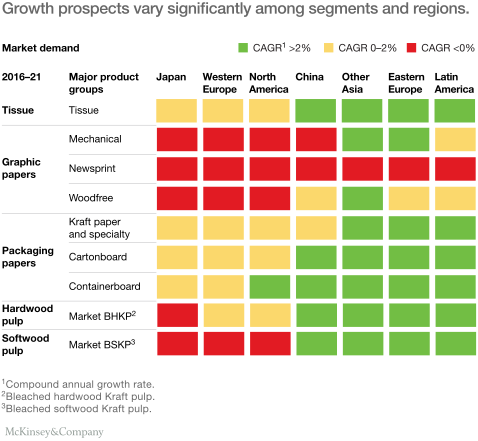The Best Forestry Software
Get the best software for your business. Compare product reviews, pricing below.
What is Forestry Software?
Forestry software provides the tools needed to cut, move, manufacturer, and distribute lumber and other natural resources through the supply chain. Forestry software needs to guide your business through the process of harvesting, transporting, processing, and selling the final product.
Forestry software was developed to overall forest management for loggers, timber harvesters, wood processors, and other companies that deal with the logistics of moving wood from stump to sale, with a stop at a sawmill or lumber yard. Forestry software will need to track the harvesting of timber, delivery of timber to mill log yards, following the processing through the mill, calculate profit and loss based on any trims or losses, and finally the shipment out to the customer (typically a contractor or manufacturer).
According to the Institute for Supply Management, total performance in the forestry industry is up across the board. This includes new orders, production, employment, deliveries, inventories, and more. Whether your forestry sector is pulp, paper & allied products, lumber & wood products, softwood lumber, or wood fiber, forestry software should provide you with the needed tools to fulfill these new orders, continue production, and fill your inventories.
Forestry Inventory
Forestry inventory is typically made up of the timber gathered during a logging operation. Forestry inventory management software will need to record inventory costs per cubic meter, tonne, and board-food. This raw material inventory is kept on hand until shipped out to contractors or manufactures in need. Logging companies will cut the wood down to specific sizes, meaning while their inventory may be made up of a single type of product (wood), it’s being classified different based on size, quality, color, and more.
What about determining the tree inventory of a forest (forest inventory)? Rather than storing the info on the materials collected from you logging process, inventory in forest products also consists of data collected from forest assessments.
Timber cruising helps measure forest stands to determine the average tree sizes, the volume of trees, and quality of the wood. Inventory can also be assessed with software to determine any risks, such as fire hazards. Overall, forest inventory will help give you an in-depth look at the state of the forests and help with strategic planning of the logging process.
Forest inventory is conducted by the software selecting a plot of forest to be analyzed in more detail. This is handled via simple random sampling, systematic sampling, stratified sampling, or clustered sampling.
Metrics that are gathered include:
- Age
- Basal area
- Diameter
- Form
- Girard form
- Quadratic mean
Forest inventory software also exists for the timber cruising process. These industry-specific options can help set up new cruises, manage cruise data, and perform error checking. They even allow for mobile use via your iOS or Android device.
GIS and Mapping
Forestry GIS software and forestry mapping software is a geographic information system for gathering, analyzing, and managing data collection. GIS capabilities in forestry software products help create visualizations from maps and other 3D data and can help you increase the value from your timber assets via map analytics and remote sensing. This key functionality provides business analytics to make better decisions regarding the plots and forest areas you manage.
GIS and Mapping capabilities let you collect field data, analyze your inventory, and monitor your operations. Many enterprise forestry management systems (FMS) developers can utilize advancements in GIS technology and incorporate them as either a core module or a custom plug-in to their solution.
Market Demand Will Shift
Historically speaking, most paper and forest-based products have been following a GDP growth pattern. Papers for reading and printing (such as newsprint) have experienced a decline since the 90s. On the other hand, packaging has seen continuous growth over time.

Mobile Technology
Advancements in forestry mobile tech have provided the forestry industry with some cutting-edge ways of going about their work. GPS tools can help define a logging area and coordinate which areas (such as designated nature sites) should be preserved. This type of mapping information can also provide information on the volume and length to cut the logs, and even give detailed information on the species and grades available in the area. Image recognition has grown over the years and artificial intelligence can now distinguish between two separate types of wood.
RFID software functionality has also begun to find it’s place in forestry, as tech leaders envision a scenario where a log is stamped with an RFID tag and read by the lifting arm on the truck as it’s collected to provide necessary information such as log count, serial numbers of loads, and weight. Forestry software developers are beginning to take notice of the demand for these products and including them in some base packages or as available additions.
Lumber Disputes That Slow Trade
In 1982, the Canada-U.S. software lumber dispute began, when the United States International Trade Commissions (USITC) felt that Canadian importers of lumber were having a negative effect on U.S. producers. The U.S. lumber industry petitioned the government and effectively, who were able to set duties and tariffs on Canadian lumber. The dispute resulted in a loss of many Canadian jobs. The dispute ended due to the Software Lumber Agreement (SLA) in October 2006, but the previous dispute still has effects that linger today. The forest industry contributes to the direct employment of 232,549 people in Canada.
Modeling and Remote Sensing Software
Systems such as the Rangeland Vegetation Simulator (RVS) have been developed to quantify vegetation and fuel characteristics in enough detail to permit estimations of annual production, treatment success, grazing capacity, and fire behavior and effects. These type of systems have been developed primarily with conservation in mind, but loggers do see the benefits of knowing how quickly and effectively their product may grow on certain plots of land. This type of functionality being available in forestry software will provide the needed analytics loggers may have been looking for since the industry was formed.

